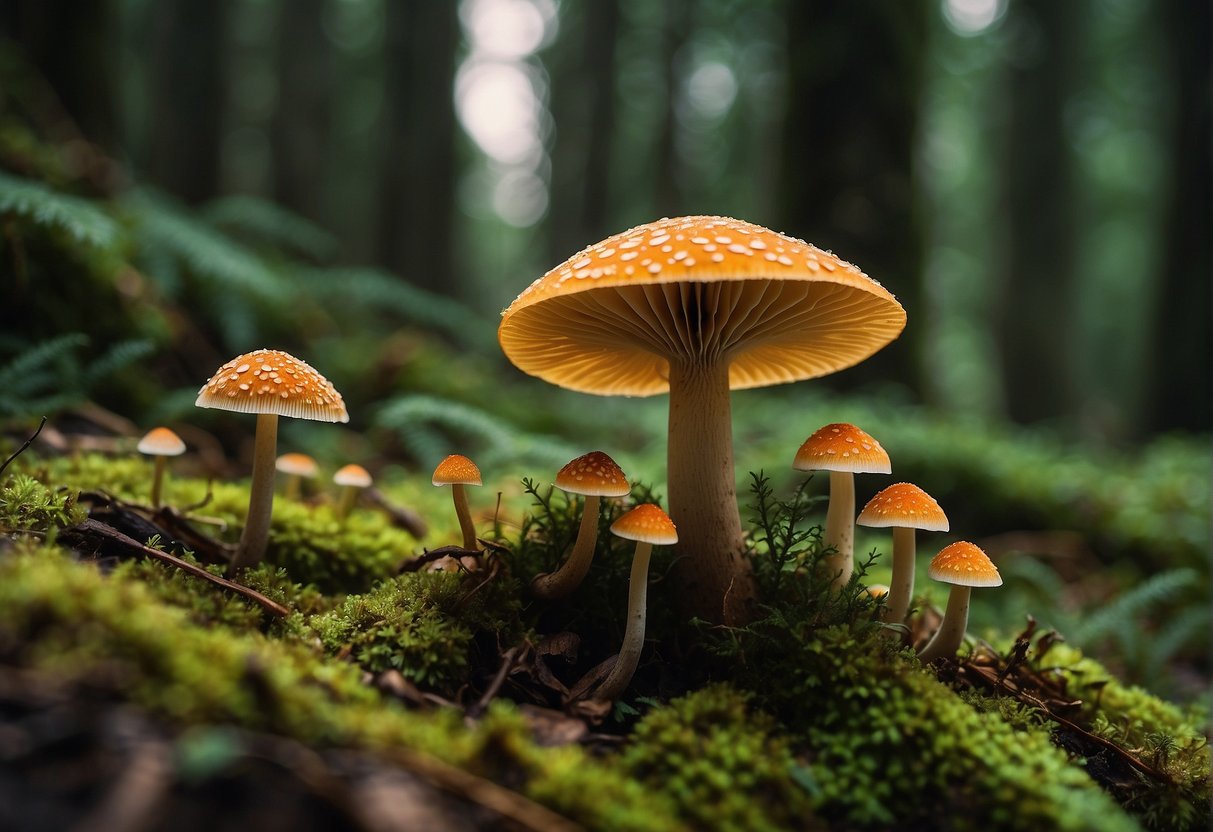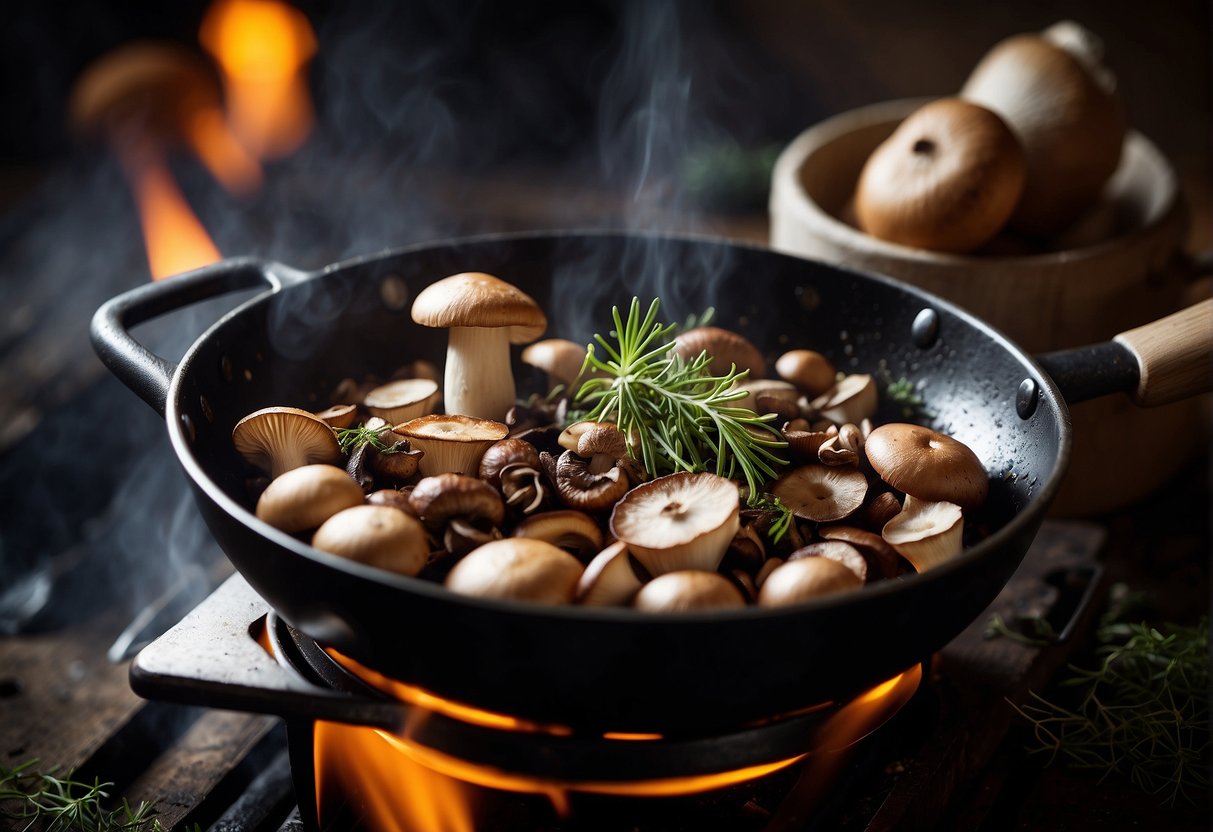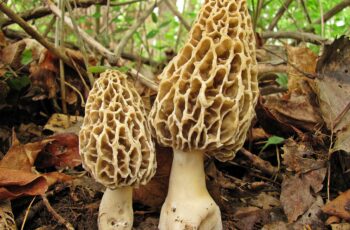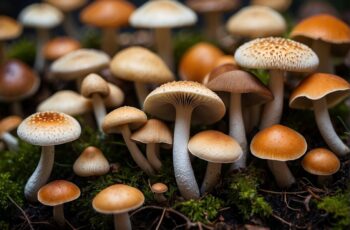Exploring the lush landscapes of Oregon leads to the discovery of a rich variety of wild edible mushrooms, a hidden culinary treasure scattered throughout the state’s forests. Your interest in foraging can find a wonderful outlet in the pursuit of these natural delicacies. With mushrooms like boletes, chanterelles, matsutake, and truffles waiting to be found, learning more about these fungi is as exciting as it is rewarding. The key to a successful forage lies in knowing how to identify safe and edible mushrooms, a skill that enhances both your outdoor experiences and your culinary adventures.

Before setting out on your mushroom-gathering quest, it’s important to understand that proper identification and knowledge of local species are crucial. This ensures both the safety and sustainability of your practice. Alongside identification, understanding the right seasons for different types of mushrooms is invaluable, since it can significantly increase your chances of a successful harvest. Once you’ve gathered your bounty, knowing how to properly clean, prepare, and cook these wild fungi will allow you to fully enjoy the fruits of your labor and possibly inspire new, delicious recipes.
Key Takeaways
- You can find a diverse array of edible mushrooms in Oregon’s forests.
- Identifying wild mushrooms correctly ensures safe and sustainable foraging.
- Knowledge of mushroom seasons and preparation methods maximizes your foraging experience.
Identifying Edible Mushrooms in Oregon
When foraging for edible mushrooms in Oregon, safety is paramount. Your primary goal should be not only to identify delectable species but also to avoid ingesting harmful toxins. Many mushroom species look strikingly similar to inedible or poisonous look-alikes.
Mushroom identification starts with familiarizing yourself with several safe, unmistakeable edibles:
- Morels are spring-time fungi with honeycomb caps. Prioritize true morels, avoiding false morels with their solid, not hollow, stems.
- Chanterelles are golden with wavy edges and a fruity smell. Don’t confuse them with toxic jack-o’-lantern mushrooms.
- King Boletes, known locally as porcini, boast stout stems and brown caps—they are one of the most sought-after mushrooms.
- The Hedgehog Mushroom, named for its tooth-like gills, is another safe choice for novices due to its unique features.
- Recognizable by their shelf-like growth on wood, Oyster Mushrooms offer a delightful culinary treat.
To confidently identify these, create a checklist:
- Cap Shape: Observe whether it’s convex, bell-shaped, or irregular.
- Color: Note the color variations as mushrooms can change hues with age.
- Gills: Look under the cap; the gill patterns can be a key identifier.
- Stem: Examine the stem’s thickness, texture, and whether it’s hollow or solid.
- Habitat: Note if the mushroom grows on wood, soil, or among other specific plants.
- Spore Prints: A crucial step for advanced identification—spores can indicate the mushroom’s species.
| Feature | Description | Importance |
|---|---|---|
| Cap Shape | Convex, bell-shaped, irregular | Defines the mushroom family |
| Gills | Under the cap; may be gilled or porous | Differentiates species |
| Spore Print | Color of spores can rule out imposters | Confirmatory identification |
Foraging for Oregon’s edible mushrooms, like the meditative matsutake or the esteemed chanterelles, can be rewarding. If in doubt, consult with an experienced forager or turn to local mycological societies for guidance. With knowledge and caution, you’ll soon add nature’s bounty to your kitchen and relish the lush Oregon landscapes.
Best Practices for Mushroom Foraging
Before you embark on a mushroom foraging adventure in Oregon, it’s crucial that you’re equipped with the right knowledge about safety, legality, and environmental considerations.
Foraging Safety and Ethics
Safety:
- Always positively identify any mushroom you plan to consume. Many edible mushrooms have poisonous look-alikes. Reference materials from a trusted mycologist or the insights from a guided mushroom foraging tour can prove invaluable.
- Carry a first aid kit and a map or GPS device to ensure you can navigate and handle minor injuries.
Ethics:
- Respect private property and only forage in areas where it is legally permitted.
- Practice Leave No Trace principles—take only photographs and leave only footsteps behind.
- Harvest sustainably by taking only what you need and cutting mushrooms with a knife to avoid disturbing the mycelium.
When and Where to Forage
Seasons:
- The most fruitful times for foraging in Oregon’s forests are spring and fall.
- In the spring, look for morels, especially in areas affected by wildfires, or where you find ash, elm, and apple trees as highlighted in a detailed guide on fungi seasons.
Locations:
- Hardwood forests with oak, birch, and beech are good for finding a variety of mushrooms.
- Coastal Oregon and the Pacific Northwest regions are known for their moist conditions favoring mushroom growth.
- Search for mushrooms near trees like pines and firs, and on the forest floor where the ground is soft and spongy, indicative of good mushroom habitat.
Oregon’s Edible Mushroom Seasons
Oregon boasts a rich diversity of edible mushrooms that surge in availability with the changing seasons. Specifically, your best bets for foraging these delicious fungi are focused in two main seasons: spring and fall. Each holds unique opportunities for both novice and experienced foragers alike, with a variety of species that form symbiotic relationships with the trees and soil of the Pacific Northwest.
Spring Harvest
The spring season is your first prime opportunity in the year to find some of Oregon’s most coveted edible mushrooms. The morels make an anticipated appearance, often found from late March through May. These spongy-looking delicacies favor recently burned woodlands and coniferous forests. It’s important to know that morels have toxic look-alikes; accurate identification is paramount for your safety. Oyster mushrooms are another springtime favorite, growing in shelf-like clusters predominantly on dead or dying hardwood trees.
Fall Fungi
As for the fall, the cooler temperatures and rainy weather create perfect conditions for mushroom growth, starting as early as September and extending into November. This season is known for the coveted king bolete, with its thick stem and large, brown cap, often hiding out near conifer trees. Chanterelles, including the golden chanterelle, are also hallmarks of fall foraging in Oregon. They form mycorrhizal relationships with trees, making them more challenging to cultivate and more exciting to find. The elusive pine mushroom is another fall treasure, sought after for its unique flavor and aromatic qualities.
For a successful harvest, familiarize yourself with the specific environments and characteristics of these fungi. Whether your target is the rich, meaty king bolete or the subtly flavored chanterelles, a little knowledge and a keen eye will go a long way in your foraging adventures. Always remember, if in doubt about a mushroom’s identity, it’s better to leave it be. Happy foraging!
Preparing and Cooking Wild Mushrooms

Embarking on the journey of foraging in Oregon’s lush woods can reward you with a plethora of edible mushrooms. Properly preparing and cooking your find ensures you enjoy the fruits of your adventure safely and to their fullest taste potential.
Cleaning and Storing
After safely identifying and gathering edible mushrooms, the next critical steps are cleaning and storing them. It’s crucial to eliminate any dirt or debris, as wild mushrooms are often dirty. Gently brush away any soil with a soft brush or paper towel. Avoid washing with water unless absolutely necessary, as mushrooms absorb moisture easily; if you must, do so briefly and dry them immediately. For food safety, discard any that look spoiled.
To store, keep mushrooms in a paper bag inside the refrigerator. This method allows them to breathe and stay fresh longer. Drying is also a viable option for long-term storage, and it intensifies their flavor. Thinly slice the mushrooms and dry them in a dehydrator or a warm, airy space.
Cooking Tips
Cooking wild mushrooms can be an enriching experience, enhancing the flavors of your meals. Begin by cooking mushrooms thoroughly; this not only helps break down any potential toxins but also releases their earthy flavors.
- Sautéing is a favorite method, involving cooking them over medium heat with a touch of oil or butter until golden brown. This provides a savory base for sauces, omelets, or a side dish.
- When preparing mushrooms like the sought-after Morels, remember they pair well with garlic, thyme, and a splash of wine.
- Large mushrooms such as Portobellos can be grilled for a meaty texture, basted with a marinade of your choice.
- For a simple preparation, mushrooms can be roasted in an oven with a drizzle of oil and seasoning until tender.
Remember, the key to bringing out the best in your wild mushrooms is to cook them in a way that respects their individual characteristics and enhances their natural flavors.


